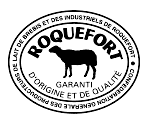The History
History: France’s Earliest Viticultural Region


The Matissat vineyards sit in France’s earliest viticultural region. As Hugh Johnson states of this area in his The Story of Wine:
“These are the first extensive vineyards in France we can be certain about”.
The estate is located in the Hameau de Sainte Brigitte, in the commune of Saint André de Sangonis, which has been designated AOC for over half a century, as the most northerly of the two zones of the Clairette AOC (1948).
France’s Earliest Known Winery

Nearby, and still in the Clairette AOC, France’s earliest known winery (AD 10) was discovered in 2007.
The appellation the wine is grown in, in the inland hills of the northern Hérault, overlaps in two villages with that of Roquefort – France’s oldest and the world’s first appellation (1925).

Here, in the villages of Pégairolles-de-l’Escalette and Octon, the grazing of Lacaune, Manech and Basco- Béarnaise ewes for the production of Roquefort cheese occurs alongside the growing of Syrah, Grenache and Mourvèdre for Terrasses du Larzac wine.
After this point, the cultivation of olive trees and vines peters out.
The First Mention of French Wine in Literature

““When ye are passed once into Fraunce or Gaule, the wine of Beterræ is in chiefe request”
Pliny’s Natural History (AD 77–79)
Indeed, the first mention of French wine in literature as being of significant merit is found in Pliny’s Natural History (AD 77–79) in which the white wines of Baeterrae [Beziers] nearby are cited as worthy of note (alongside the resinous reds of Vienne):
“When ye are passed once into Fraunce or Gaule, the wine of Beterræ is in chiefe request.”
[CHAP. VI. Pliny’s Natural History: Of kindly wines made of the best Grapes. Trans. PHILEMON HOLLAND 1601]
William Smith, in A Dictionary of Greek and Roman Antiquities (1875), writes, “Of the wines in Southern Gaul, that of Baeterrae alone bore a high character.”
In 1879, two amphorae bearing inscriptions from the region of Béziers were discovered at Castro Pretorio in Rome by Heinrich Dressel. One inscription, dated to the first half of the 1st century AD, declared, “I am a white wine of Beziers and I am 5 years old.”
The wines of Beziers were grown along the bank of the Herault river, where the Matissat cuvee is grown, as as this map showing the archaeological sites of France’s earliest-known wine production shows.

Making History Now

“There has been more ballyhoo about this domaine than any other since Daumas Gassac.”
So wrote Paul Strang of Matissat’s La Pèira estate in his book The Wines and the Wine Makers.
Daumas Gassac lead the renaissance of fine wine production in the South of France in the 1970s and 1980s.
Owner Robert Dougan spoke, in 2005, of the excitement of being an explorer in the modern world when interviewed in 2013:
“The idea that we can make history now and be part of that is exciting… The South of France region in general is unfolding before our eyes in our lifetime. We’d love to go back to Burgundy and see the nascence of Burgundy when discoveries were made… We have that process unfolding before our eyes in our lifetime.”
“A landmark Mourvèdre, like no other in France.”

Writing for Gourmet Traveller Wine in 2013, Andrew Jefford: noted of the 2007 vintage: “A landmark Mourvèdre, like no other in France.”
He goes on: “they have created great wines, the kind of wines that can jolt consumers’ perceptions and can rival the best from Bordeaux, and the Rhône. Maybe, given time, they might even right a historical wrong.”
Growing areas such as Bandol come to mind when thinking of Mourvèdre, or certain wines such as the Beaucastel’s well-known ‘Hommage’.
Yet such wines and these noted examples are mostly blends.
The ‘Beaucastel’ is 60-percent Mourvèdre, and top estates in Bandol (which some might regard as Mourvèdre heartland by the sea). Many outstanding Bandol estates such as Tempier even advise against bottling pure Mourvèdre.
Far away from the grapes seaside haunts and in the inland hills of the Herault in 2007 Matissat here was a pure Mourvèdre that was complete, complex, and valid on its own singular terms, like a Nebbiolo grown in Barolo or Barbaresco, or a Pinot Noir grown in Burgundy,
Late-ripening, tannic, and with its own earthy inimitable character, Mourvèdre also has an extraordinary ability to age and to unfold and show more with time. Andrew Jefford’s description of the cépage is interesting:
“It reminds me of midnight: dark, quiet, impenetrable, enigmatic… but, at its best, full of strange magic.”
A Land where the Modern World Began

“
Around the time that Gaspard de Stérimberg, weary of fighting Cathars in Southern France, went off to retire and build his famous abode on Hermitage hill, the area where we work was still known as Occitania. The name simply meant the region where Occitan (or Òc) was spoken, covering parts of Southern France, Monaco, Italy, and Spain.
Most significantly, Richard the Lionheart’s first language was Occitan, as was his mother Eleanor of Aquitaine’s. His great-grandfather, William IX, was one of the first Occitan poets (Troubadours).
The poetry of the Troubadours—dominant in Europe from 1100 to 1350—effectively invented the idea of romantic love and courtly love, which continues to influence literature today.
Un souhait de défendre l’un des plus grands trésors et cultures régionales de l’Europe

Près du vignoble de Matissat se trouvent plusieurs sites du patrimoine mondial de l’UNESCO. Sur l’ancienne route des pèlerins de Saint-Jacques-de-Compostelle, il y a l’abbaye de Saint-Guilhem-le-Désert fondée en 804 après J-C. On y accède par un autre site, le Pont du Diable du XIe siècle - le vieux pont de pierre qui reliait les abbayes bénédictines d’Aniane et de Saint-Guilhem.
Nous avons toujours considéré toute notre région, ses vignobles, son histoire, ses cuisines, ses habitants, ses coutumes et ses traditions comme un grand site du patrimoine mondial.
